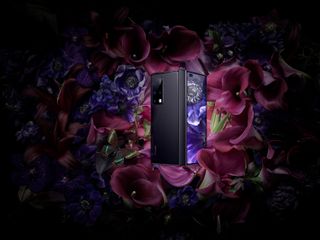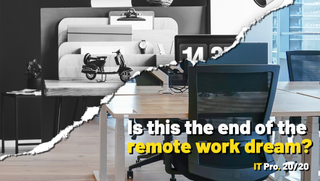What is HarmonyOS? A guide to Huawei's operating system
We take a look at Huawei's fledgeling OS that's aimed at IoT and, now, smartphones

Huawei has become so synonymous with the fact it can no longer use the full Android operating system that many of us seem to have forgotten just how innovative the company actually is. An average tech firm would have surely rolled over and died without being able to offer Google Play, or Netflix or WhatsApp, on their smartphones. But, no, not Huawei, it simply rolled up its sleeves and built its own mobile OS.

IT Pro 20/20: The end of the remote work dream
Issue 20 of IT Pro 20/20 examines whether a new industry policy to pay workers based on location is likely to catch on
In truth, the firm had been developing a system for its wider IoT portfolio for a number of years. However, this was something to connect its huge range of smart speakers, watches, tablets and computers, not strictly a mobile OS. But the Chinese giant had some future plans for smartphones and were almost forced by the US gov to pivot towards its in-house offering.
What is HarmonyOS?
It's actually 'HongmengOS', but Huawei has tweaked it to 'Harmony' for the international market. The original name means wild goose in Chinese mythology, but the term 'harmony' is very well suited as it's being designed to be a one-size-fits-all multi-device operating system.
It's an idea that Huawei says it has been working on for over a decade; an OS that can power a range of IoT tech from smartwatches, to tablets and even in-car systems. One customisable platform for practically any hardware that's internet-connected. And, due to its ongoing issues with Android and the US government, this will also mean smartphones with the foldable Mate X2 the first to use it.
How does it work?
The system is based on a microkernel, which is a minimal software structure for operating system mechanisms. As opposed to monolithic kernel systems which are layered, the microkernel's mechanisms work with smaller source code bases. For example, Android runs on 100 million lines of code.
Harmony, according to Huawei, runs on just 100 lines of code and trumps Android on performance because it has a "Deterministic Latency Engine". This is about prioritising performance, where the system simplifies the communication channels between the software and the hardware - supposedly reducing latency.
The multi-device part comes from an Integrated Development Environment (IDE) and a distributed architecture kit. The idea is that developers can efficiently build apps that run on multiple devices and the multi-device IDE allows them to code their apps once and deploy them across different hardware. The aim is to create a tightly integrated ecosystem across all user devices. This is enabled by an ARK complier, a system for developers to build with different languages that then translates them into one language for HarmonyOS.
Get the ITPro. daily newsletter
Receive our latest news, industry updates, featured resources and more. Sign up today to receive our FREE report on AI cyber crime & security - newly updated for 2024.
What devices will it be on?
Huawei's fancy new OS started life on the Honor Vision Smart TV and also featured in various IoT devices. The company had plans for it to be integrated into laptops and wearables too, but that has now been tweaked to include smartphones.
The first mobile phone to feature the OS was the company's second foldable offering, the Mate X2, but it is now available on some of its older models, such as the Mate 40, P40 and the P30. It is set to come pre-installed on the Chinese giant's next flagship launch, the P50, which has yet to be announced for the UK market.
What about Android?
HarmonyOS has been in the works for over a decade, but Huawei only unveiled it until after Google announced it would be withdrawing Android support. This naturally led many to assume that Huawei had a replacement in the works, yet curiously what we got was an operating system geared more towards other kinds of hardware.
The strained relations between the US and China has had a huge impact on Huawei. The firm has launched the Mate 30, P40 and Mate 40 with a limited version of Android while it has worked to build up a worthy app gallery. The situation has been anything but harmonious but Huawei might have finally found the answer to that...
Bobby Hellard is ITPro's Reviews Editor and has worked on CloudPro and ChannelPro since 2018. In his time at ITPro, Bobby has covered stories for all the major technology companies, such as Apple, Microsoft, Amazon and Facebook, and regularly attends industry-leading events such as AWS Re:Invent and Google Cloud Next.
Bobby mainly covers hardware reviews, but you will also recognize him as the face of many of our video reviews of laptops and smartphones.





